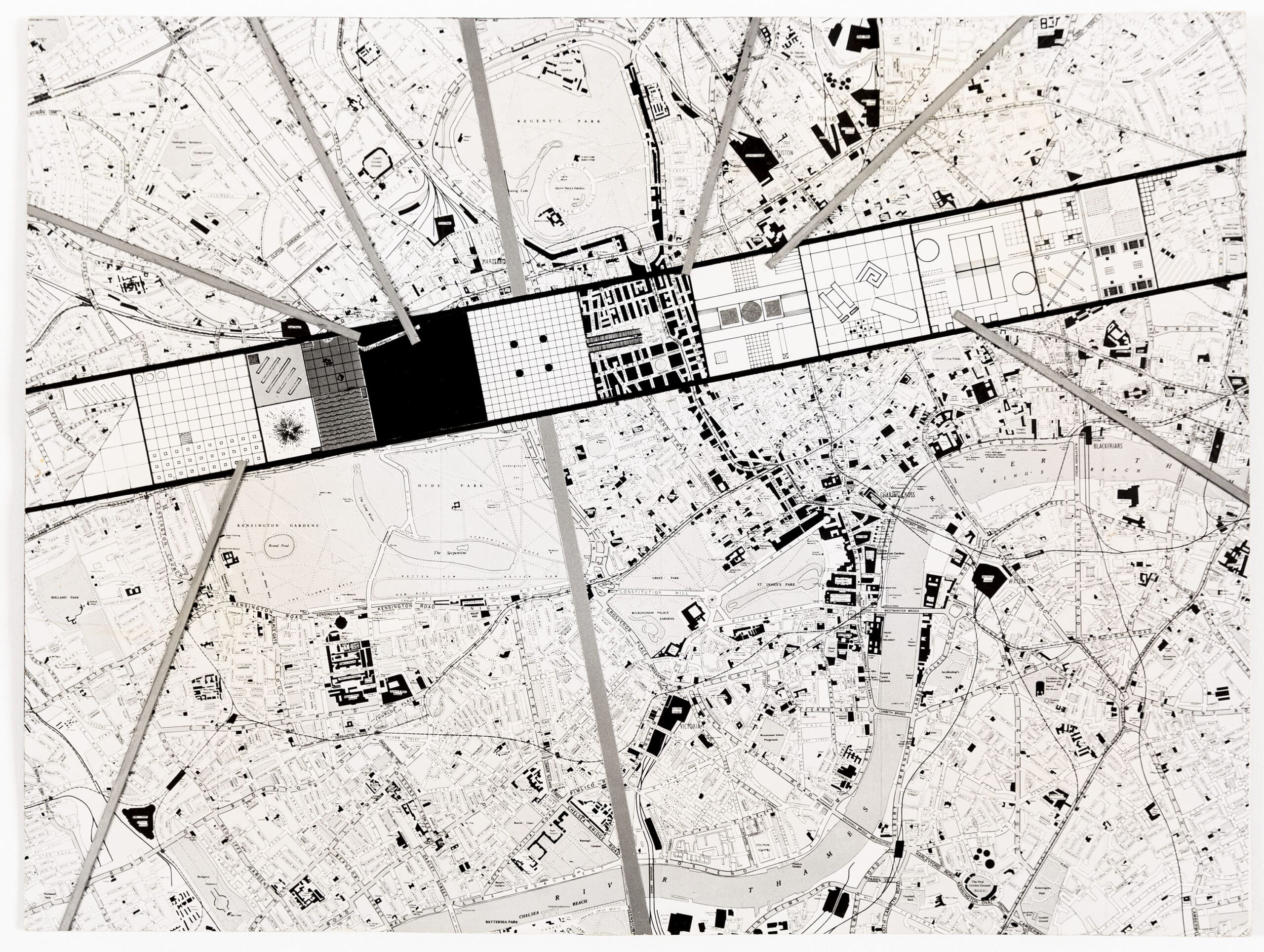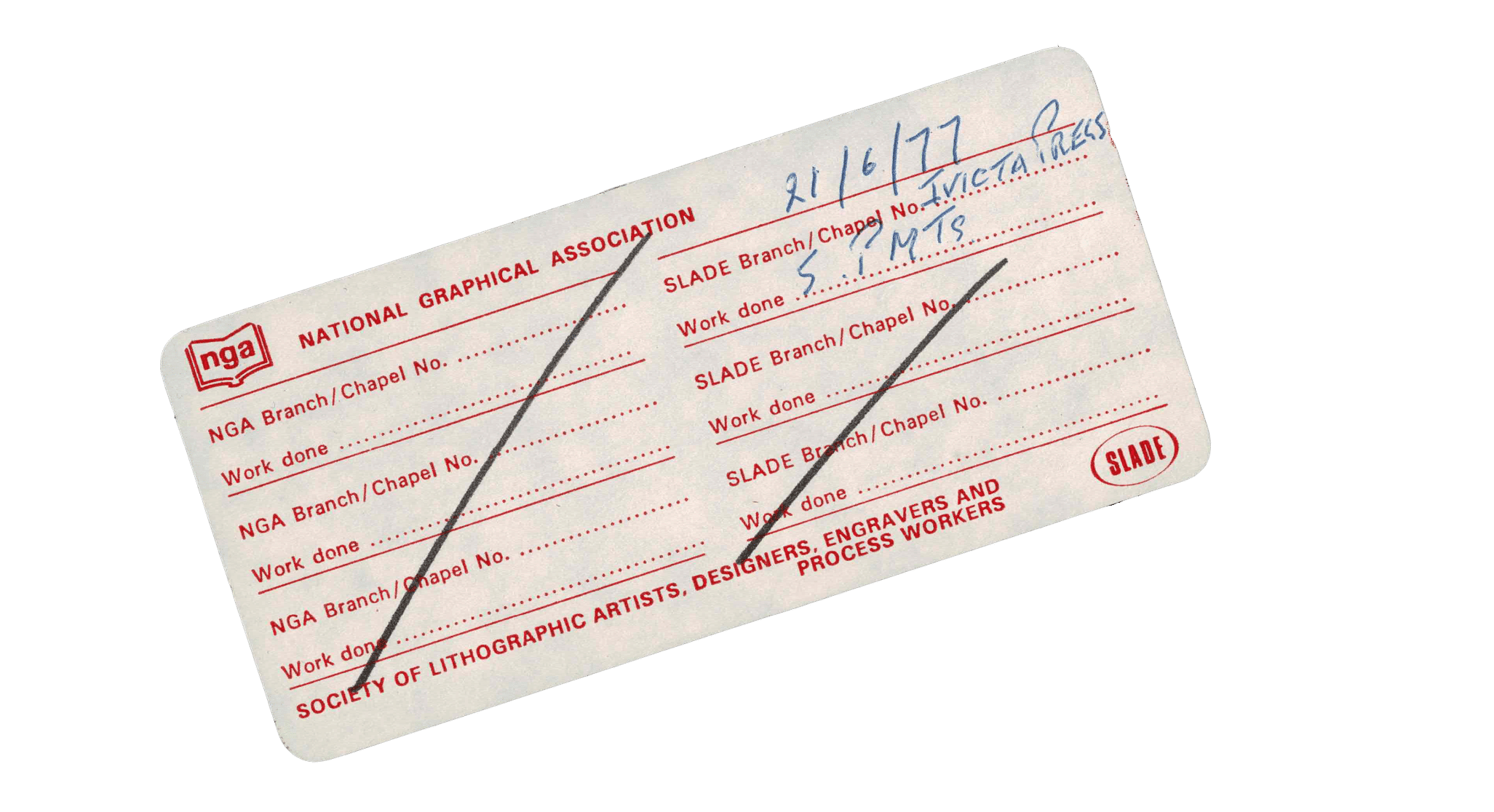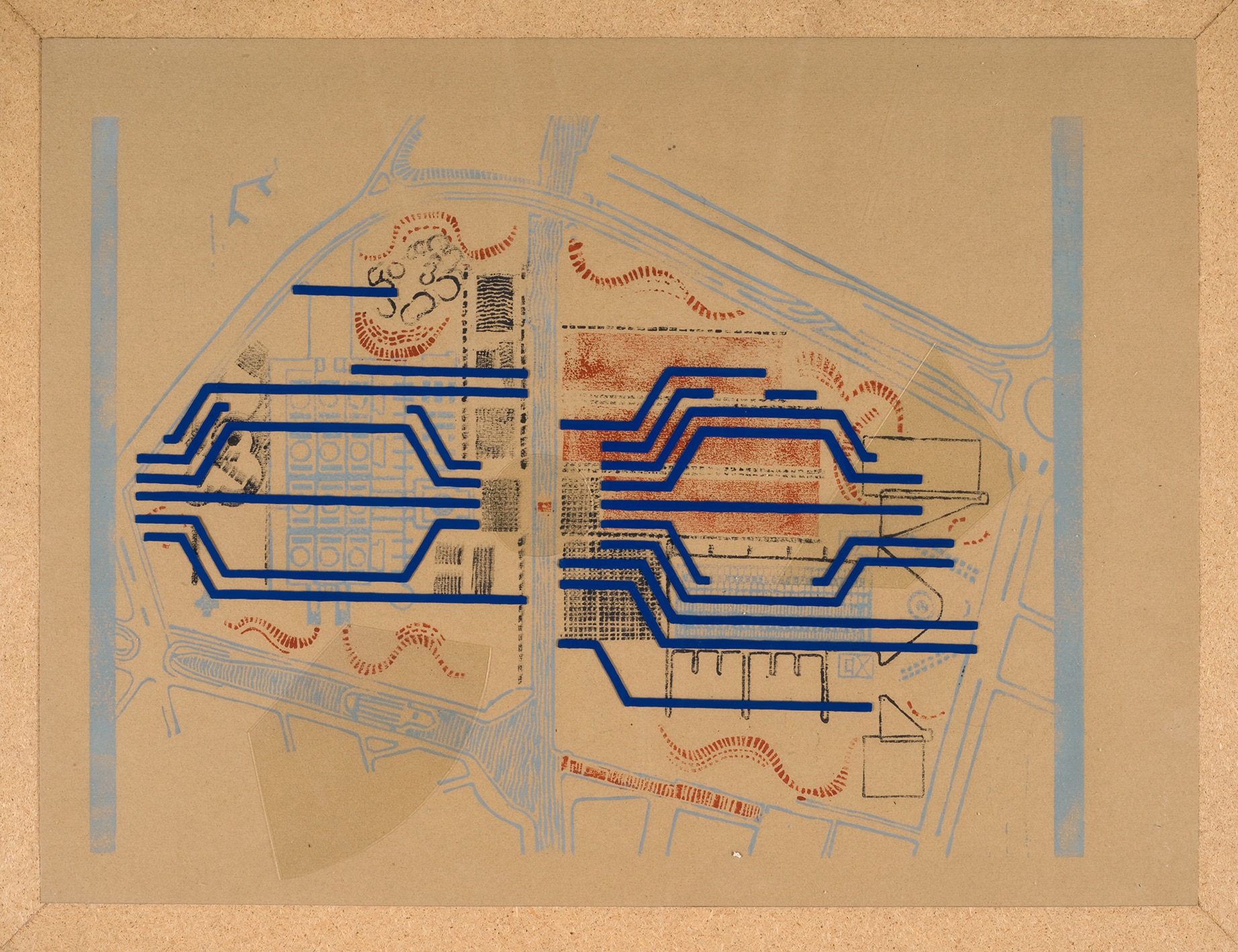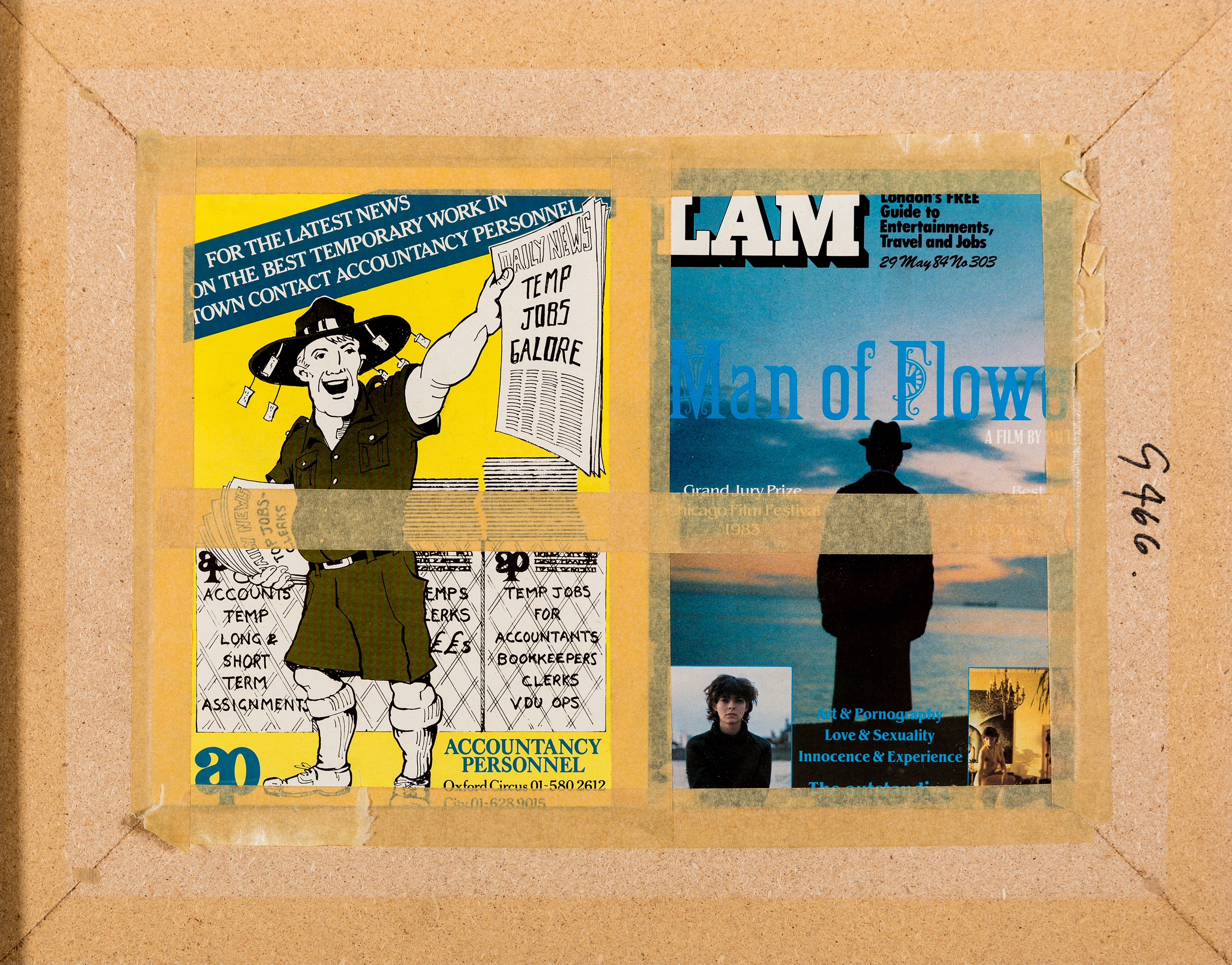Artful Trades: Into a Market of Consumables
The following text is an excerpt from the guide that accompanied the exhibition ‘PRINT READY DRAWINGS: Composites, Layers, and Paste-ups, 1950-1989’, installed at the MAK Center for Art and Architecture in Los Angeles between 11 November 2023 – 4 February 2024, and curated by Sarah Hearne.
Despite predictions of the diminished importance of architectural drawings in building construction throughout the 1970s, the following decades were marked by a proliferation of drawing exhibitions and institutional collecting practices.[1] Just as the typewriter miniaturized the logic of the printing press, by the 1970s the supplies of architectural drawing production also included technologies intrinsic to visual work, which shifted the locus of the printing industry toward computerization and made in-office production more viable for architects.[2] At the same time, certain tasks ensured that architects remained attached to union-protected printing houses.


The black-and-white print of OMA’s Exodus project is perhaps the best-known image from the radical 1972 Architectural Association thesis by Rem Koolhaas, Madelon Vriesendorp, Elia Zenghelis, and Zoe Zenghelis. This specific print was made in 1977 by Invictus Press. The reverse side reveals the stamp placed there by the National Graphical Association. The logo indicated this ‘camera- ready’ artwork was printed at a unionized company in London.[3] The significance of this stamp appearing on an architectural print provides us with an opportunity to consider the other side of production in this moment. Shifts in labour practices, coupled with advancements in printing technologies such as offset replacing letterpress, and the development of supplies such as Letraset, transformed the printing press into more personalized forms of production. These activities reflect the intense print- and graphic-orientated culture that arose related to the proliferating consumer market around image-making supplies. In these material and procedural decisions is a backdrop of tensions that would erupt in union activities and strikes throughout the 1970s and ‘80s across the printing industries in conjunction with even more dramatic transformations in computer layout and graphic interfaces.


Cedric Price was well known for his political allegiance with union movements in London, and many of his best-known designs map the transformations of industrial working and social paradigms from industrialization of manufacturing to service and communication. In 1982 he entered the international competition to redevelop La Villette in Paris from abattoirs and a wholesale market to an entertainment district and public park. His choice of media was not the mechanical paste-ups he is so renowned for but instead a carefully layered lithographic print. Like many, Price turned to lithography to produce a more direct and artful limited print. The document on layers of acetate appears graphically as though etched with reduced details of block colour depicting rippling roads, grassy berms, and dotted pathways. On the topmost layer, Prussian blue strips connect from the road entry, splaying out almost like a processing chip, continuing his ongoing interest with a computerized architecture. The print was backed sometime after 1984, a date indicated by use of the cover of LAM magazine as a cardboard matting, complete with advertising for ‘temp’ workers in administrative and clerical work. As a material assemblage, the item reflects the emerging working model of freelancing, which would similarly inflect the working model of architects: with this new flexibility, there was also an imminent precarity for workers.
Notes
- Reyner Banham, ‘Iso! Axo! (All Fall Down?),’ Great Models: A Digression on the Architectural Model. Student Publication, School of Design, North Carolina State University, 27 (1978), 17-21.
- Craig Buckley, Graphic Assembly: Montage, Media, and Experimental Architecture in the 1960s (Minnesota: University of Minnesota Press, 2019).
- John Gennard, A History of the National Graphical Association (London, UK: Unwin Hyman, 1990).
Sarah Hearne is an architectural historian, educator, and curator. She received her PhD in Architectural History at the University of California Los Angeles in 2020 with her dissertation ‘Other Things Visible on Paper: Architectural Writing and Imaging Craftsmanship 1960-87’.
‘Print Ready Drawings’ is curated by Sarah Hearne, with curatorial assistance by Arianna Borromeo, Lauren Akira Verdine, and support from the MAK Center exhibitions team Seymour Polatin, Exhibitions and Programs Manager and Brian Taylor, Curatorial Assistant. The exhibition features commissioned films by Julie Riley and Jenny Leavitt. Exhibition design is by Current Interests with conservation support from Paradise Framing. Graphic design is by Christina Huang. ‘Print Ready Drawings’ was made possible, in part, with generous support from the Getty Foundation’s Paper Project Series. Additional support was provided by the Graham Foundation for Advanced Studies in the Fine Arts and the University of Colorado Denver, College of Architecture and Planning.
